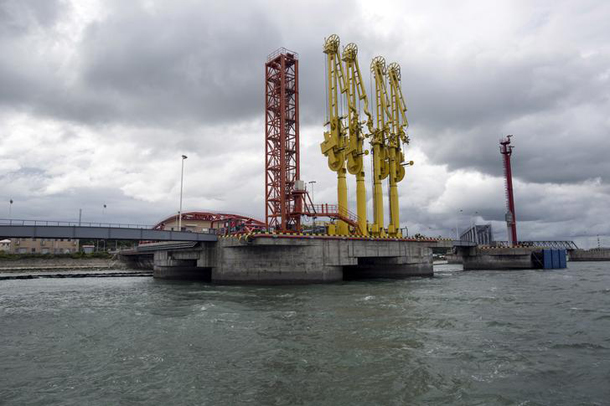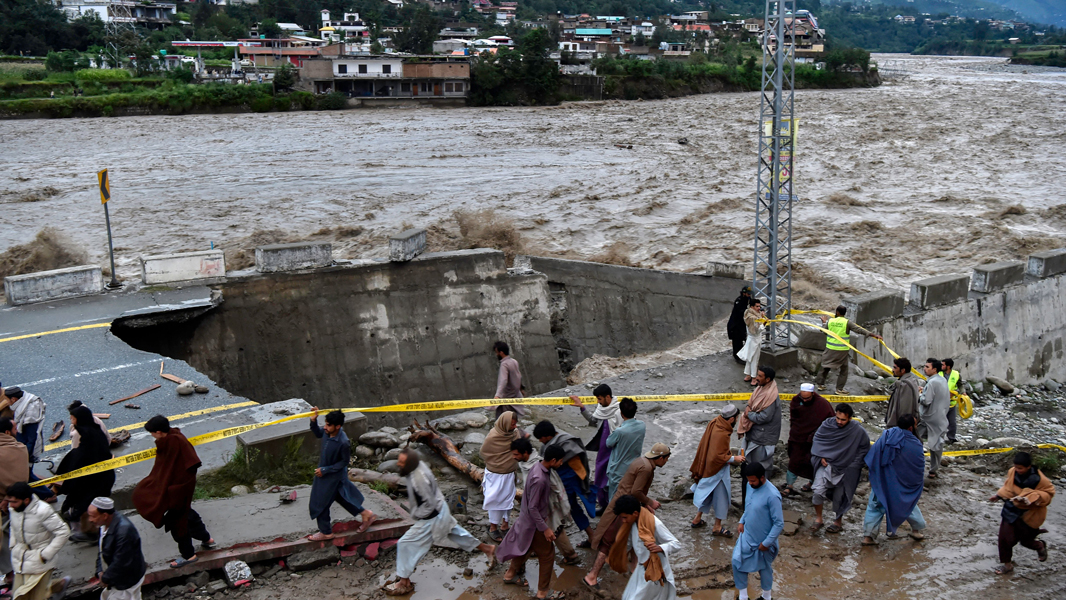India’s Global South Policy in a Melting Pot
K.M Seethi
The Woke Journal | April 20th, 2018
Does the current world system auger well for the Global South (GS) countries like India? Many in the GS are now apprehensive about the ‘windfalls’ of globalisation with the US President Donald Trump in office.
India’s status as a Global South nation is in its critical phase of transition today, even as it is being characterized as one of the fastest growing economies in the world. It is credited to have the world’s fifth largest military expenditure, third largest armed force, sixth largest economy (by nominal rates) and third largest economy (in terms of purchasing power parity). One of the founding members of the United Nations, Non-Aligned Movement (NAM), Group of 77, G-20, the WTO, SAARC, BIMSTEC etc., India is also a strategic partner of ASEAN, a critical founder-player in the BRICS, the Asian Development Bank, New Development BRICS Bank, International Monetary Fund (IMF), and the Shanghai Cooperation Organisation. Yet, do these memberships and positions across the global fora pay adequate dividends for the country?
With the onset of globalisation, way back in the 1990s, the foreign policy of India had entered an era of complexity and uncertainty. India was constrained to reorient its foreign policy by keeping a number of domestic and international developments at the backdrop. Indeed, some of the significant developments such as the emergence of the United States as the hegemonic power, the ‘peaceful’ rise of China, the steady growth of trading blocs, including regional, trans-regional as well as multilateral trading arrangements, all called for diverse modes of foreign policy engagements.
However, the attempts to integrate economies on a global scale have also been accompanied by negative trends. Besides global recession, setbacks in commodity trade, there has been an alarming growth of different forms of terrorism, ethnicity and religious fundamentalism. Similarly, problems such as environmental setbacks and refugee crises indicate the inherent weaknesses of the global system. As such India has to engage with and relate itself to an infinitely more complex world.
India had begun to meet the challenges of the emerging world by launching a spell of neoliberal economic reforms in 1991. The reform agenda, however, called for rolling back of the state from the overall public sphere, particularly from the social security/welfare realm, besides maintenance of fiscal discipline and introduction of austerity measures.
Even as India sought to integrate itself with the world economy, it has also been compelled to find pathways to encounter the challenges of globalisation. The accelerated pace of globalisation has certainly shortened the distance in the world, as also it has brought, in its wake, new forms of cooperation as well as conflicts.
The global setting, over years, presented a complex formation within which a variety of actors—ranging from states, nonstate actors (NSAs), international organisations, social movements, transnational corporations, to non-governmental organisations (NGOs) and communication media—operate and interact in diverse, yet intricate ways. There are, however, significant pointers underlying the process of globalisation.
The neoliberal global assertion—at the expense of social security/welfare—is a characteristic of the changing social landscape of the world. The government is naturally under pressure to promote the idea and practice that scuttles the welfare state. Consequently, the very discourses of foreign policy shifted from an ideational orientation of non-alignment to what is generally called ‘pragmatic realism.’
Thus, the attempts to integrate the Indian economy with the world system have been accompanied by a series of measures that called for fundamental changes in the realm of polity and foreign policy. Nowhere is this quite perceptible than in the sphere of India’s Global South policy. In the earlier phase of its development strategy, India could resist external pressures, though in a limited way, by mobilising support from the Global South countries.
The structural and ideological shift from Keynesianism to the new political economy of neoliberalism has brought to light the susceptibility of the Indian State which became increasingly dependent on global capital more than ever before.
However, with the changing nature of the State and the economic dynamo of a global environment, India finds it difficult to sustain a sovereign political space for itself and for advancing the cause of the GS countries. The new techno-economic world order is very critical in that pressures on the GS countries are more decisive than ever before. India’s accession to the global trade regime made several policy changes inevitable in areas of trade, investment, service, industry, and agriculture.
The new obligations made the welfare agenda of the Indian state obsolete. The structural and ideological shift from Keynesianism to the new political economy of neoliberalism has brought to light the susceptibility of the Indian State which became increasingly dependent on global capital more than ever before. This surely undermined the autonomy, sovereignty and the independent decision-making powers of the Indian State.
Paradoxically, the post-Pokhran posture of the successive governments in New Delhi created an impression that India has been governed by a State that is not only overtly aggressive in its designs but also impulsive and unreliable in its international conduct.
India’s acquisition of nuclear weapons created a much greater risk of a nuclear disaster rather than lead to self-limitation. This is obviously because it considerably enhanced the risk of an India-Pakistan nuclear inferno. India has, over years found it difficult to sustain a credible and transparent position on the nuclear question, particularly in the background of its nuclear and missile tests. The implications of this should be understood in the larger context of peace and stability in the region and the Global South, at large.
American Economy in Trump Era
Observers see Trump’s attempts to bring back the erstwhile ‘protectionism’ as a major challenge for the American economy. So are their implications for the GS countries. Many agree that the logic of global capital doesn’t permit any kind of ‘retreat of the American state’ from the global market. It is quite unlikely that these efforts will enhance the US competitiveness or increase its share of the domestic market. Economists argue that Trump’s economic policy regime will result in higher prices, unskilled labour, war debts and financial monopolies.
The much talked about “trade war” unleashed by Trump will most likely result in China diverting trade from the US to other market locations. It will also relocate its investments by way of augmenting its domestic economy, and increasing ties with Russia, Asia, Africa, Latin America and Oceana.
It seems India under the Narendra Modi government is comfortable with a Far-Right regime in Washington albeit President Donald Trump has been reversing his predecessors’ policies, including the US position on global trade, nuclear proliferation etc.
The US strategic brinkmanship with China is inherently dangerous and fraught with unforeseen consequences for the GS countries who used to look upon the US as an important rallying point. Trump’s efforts to set up higher tariffs will certainly increase costs without raising income and improving innovation. They will also put a lid on the trade prospects of the GS with the US.
Admittedly, China has multi-billion-dollar infrastructure investments across fifty countries in the world that can augment its trade surplus. However, little does Trump realise the consequences of the US having multi-billion-dollar expenditures across several dozen countries and more than 800 overseas military bases. In any case, while Trump is proving himself as a bad “political businessman,” many see it as a propitious time for China, Russia and India to recapture the global market and thereby enhance the interests of the GS.
India’s Relations with US, Russia, and China.
A major aspect of India’s changing GS policy could be explained in terms of its relations with the major powers, notably with the US, Russia, and China which evolved in diverse ways and assumed new dimensions, over the last two decades. This is particularly evident in India’s engagements with the US. India has now shown its willingness to accept the US as a strategic partner in diverse areas, including in the process of restoring stability in South Asia. It seems India under the Narendra Modi government is comfortable with a Far-Right regime in Washington albeit President Donald Trump has been reversing his predecessors’ policies, including the US position on global trade, nuclear proliferation etc.
Even as India’s relations with Washington promised more ‘opportunities’ in the post-cold war era, Indo-Russian ties have come under pressure due to the decline of the Russian State in world politics. However, many felt that the coming together of Russia, China and India could also challenge the global dominance of the US-led world. An important example is BRICS. But China’s ‘peaceful’ rise, its long-sustained military co-operation with Pakistan and India’s uneasiness about China’s expanding involvement in South Asian affairs have become major obstacles in the prospects of building any viable project of Sino-Indian cooperation. India’s relations with China have always generated controversies since the war of 1962.
Many would, however, agree that as long as the boundary dispute remains unresolved, an element of uncertainty will linger, and from this uncertainty would emerge the adversarial nature of Sino-Indian relations. Yet, the constraints of the present international environment are such that China cannot afford to remain in perpetual hostility with India. A significant feature of the post-2001 scenario is that China emerged as India’s top trading partner, notwithstanding the fact that the balance of trade is unfavourable to India because of the burgeoning imports from China.
The Global South in South Asia
While there has been a perceptible shift in the policy and practice of the Indian State in the post-cold war period, its relations with South Asian countries (all belonging to the GS) have not been marked by any substantial change except in the sphere of perceptions. India’s South Asian policy sought to sustain its politico-strategic and economic interests, on the one hand, and the process of strengthening ties with neighbouring countries, on the other. Both India and Pakistan—the core actors in South Asia—remain victims of a deep-rooted psychology of mistrust and suspicion.
However, there is hardly any alternative other than cordial relations between them, which is a prerequisite for regional peace, stability, and cooperation. Even as Kashmir continues to be the bone of contention between the two, India must ensure that the ground situation in the state of Jammu and Kashmir is under control with the people enjoying the democratic dividend. This will certainly enhance India’s strategic bargain in any dialogue process involving Pakistan. India should, therefore, be much more realistic and pragmatic, not in the conventional national security sense, but in terms of addressing the basic needs of the people in Jammu and Kashmir. Indian interests in the region are primarily to ensure the safety and security of the 7 million Indian expatriates in the GCC states, the continued supply of oil and gas from the region, and political stability for mutual cooperation and increase in trade, aid, and investment opportunities.
Regionally, the small states like Nepal, Bhutan, and the Maldives seldom receive the attention they deserve. Most often, Nepal and Bhutan are perceived as vassal states of India supposedly sustaining its geopolitical interests. This has generated considerable misgivings and concerns about the role of India in South Asian politics, particularly India’s attitudes and orientation towards the democratic process in these countries. India’s Sri Lanka policy also witnessed fundamental changes in the post-1991 period. Both countries now seek new avenues of economic and commercial transactions. India also knows that too much involvement in the internal affairs of Sri Lanka will have its inevitable fallout, as history has shown in the context of the Tamil question. Another significant shift in India’s regional policy can be seen in its relations with Southeast Asia—enunciated from Narasimha Rao’s ‘Look East’ to Narendra Modi’s ‘Act East’ policy. The deepening trade and other commercial transactions (strengthened by India-ASEAN Free Trade Agreement) showed India’s desire to be a key partner in the larger Indo-Pacific community.
The Gulf and West Asia
The imperatives of India’s Gulf/West Asia policy are obvious. The geostrategic position of the region, its oil potential, and India’s historical religious and cultural affinity with the region all have shaped its policy towards the region. Indian interests in the region are primarily to ensure the safety and security of the 7 million Indian expatriates in the GCC states, the continued supply of oil and gas from the region, and political stability for mutual cooperation and increase in trade, aid, and investment opportunities. However, with the Arab uprising and the oil price fluctuations, an element of uncertainty has set in. All GCC countries are currently engaged in reducing the expat population and regulating the inflow of migrants.
The localisation of labour has already been underway in countries like Saudi Arabia, Oman, Kuwait etc and thereby resulting in a situation when thousands of Indian (and more specifically Kerala) migrants are compelled to return to their homeland. Even as the challenges emanating from such indigenisation measures still continue, India and the Gulf States such as UAE, Oman, Iran are negotiating for new avenues of cooperation and collaboration.
Another major, yet sensitive area of India’s West Asia policy is its relations with Israel. While India’s stand on the Palestine question has been quite consistent, with occasional shifts since 2014, it has also been very keen to ensure that Israel does not get sidelined. New Delhi’s multifaceted dimensions of Indo-Israel relations, including in the defence-strategic sectors, could be a pointer. India has also been evolving a new strategy to forge relations with African countries. India is seeking to establish viable links with the Africa Union (AU) and most of the important regional collectivities in Africa. It should also focus on select African countries and use them as potential players to spread the network of its ties in the continent. Obviously, this will enhance India’s Global South policy in the long run.
Trade Deficits and Growing Inequality
In spite of India’s over-enthusiasm in global trade and business transactions, it has been facing sustained trade deficits over the last three decades mainly due to the burgeoning imports, particularly of crude oil, gold, and silver. Of late, the biggest trade deficits were shown with China, Saudi Arab, Iraq, Switzerland, and Kuwait. The only countries with whom India has trade surpluses are the US, Singapore, Germany, Netherlands and United Kingdom. India’s trade deficit widened to $16.3 billion in January of 2018 from a $ 9.9 billion a year earlier. It is the highest trade deficit recorded since May of 2013. Most importantly, India’s share of world trade has not even reached 2 percent notwithstanding its ‘open door’ policy during the last two and a half decades. The Oxfam India’s latest report launched ahead of the World Economic Forum in Davos in 2018, showed that 73 percent of the wealth generated in India last year went to the richest one percent, while 67 crore Indians who comprised the poorest half of the population saw one percent increase in their wealth. It says that during the last 12 months, the wealth of this elite group increased by Rs 20,913 billion. This amount was equivalent to the total budget of Central Government in 2017-18.According to the World Inequality Report 2018 brought out by World Wealth & Income Database, income inequality in India has grown over the last three decades and a half with the top 10 percent of earners cornering 55 percent of the national income in 2016, the worst level among major economic blocs, except West Asia.n
In Human Development Index (HDI) ranking for 2016, India’s position was so low. India found itself among a group of countries classed as “medium” on the list. Regional disparities in education, health, and living standards within India—or inequality in human development—shave off 27 percent from India’s HDI score. India was ranked 131 out of 188 countries in an HDI list, behind Sri Lanka and the Maldives in South Asia. Admittedly, globalisation has brought in new opportunities as well as challenges for India. But, for India, the challenges are so formidable, as the reports of global trade, world inequality, and income disparities indicated. To meet the challenges, India has to lessen the impact of intensive, yet unequal competition unleashed by globalisation and liberalisation on the productive sectors and the workforce in its industrial and agrarian realms. While rectifying such impact, India, along with the other Global South countries, should seek to restructure the international trade regimes through collective bargaining. Even as the threat of ‘neo-protectionism’ looms large with more uncertainty in European Union (post-Brexit) and Trump’s ‘America-First’ policy, countries like India have very limited option but to get mobilised to protect the vital interests of the Global South.
@ https://wokejournal.com/the-woke-journal-columnists/k-m-seethis-column/indias-global-south-policy-in-a-melting-pot/




